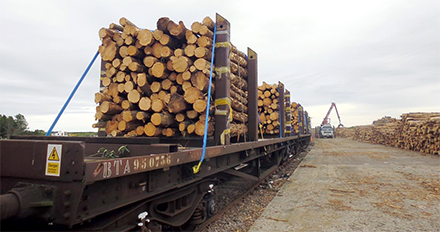Forestry and wood processing is a 21st century Scottish success story. Increased tree planting has attracted hundreds of millions of pounds in investment and is sequestering carbon, providing thousands of jobs and creating more places for people and wildlife according to Stuart Goodall, Chief Executive Confor. Source: Timberbiz
In the year of COP26, of green recovery from the pandemic and a renewed focus on nature, Scotland’s forestry and wood processing sector is elevating the triple bottom line to a new ‘triple top line’ he said.
Mr Goodall said that back in the 1990s, the industry signed up to detailed standards for managing forests. This partnership between government, environmental NGOs, access groups, industry and many more, was ground-breaking. The standards embedded the triple bottom line in everything the sector does – providing a balance between economic, environmental, and social outcomes.
Scotland has its Forestry Strategy and is planting 80% of new woodland created across the whole of the UK in diverse, modern forests with a wide range of tree species that lock up tens of thousands of tonnes of carbon every year.
The forestry and timber industry contributes £1 billion to Scotland’s economy every year-and supports more than 25,000 jobs. It has grown since that value was last calculated in 2015, offering a wide range of skilled and often hi-tech, well-paid jobs from the south-west to the Highlands, mainly in rural areas where employment is most needed.
Scotland is the only part of the UK to have set wood use targets, a vital step to decarbonise construction by substituting ‘carbon-heavy’ building materials like concrete and steel with lowenergy wood, a material that locks away carbon and which can be easily reused and recycled.






